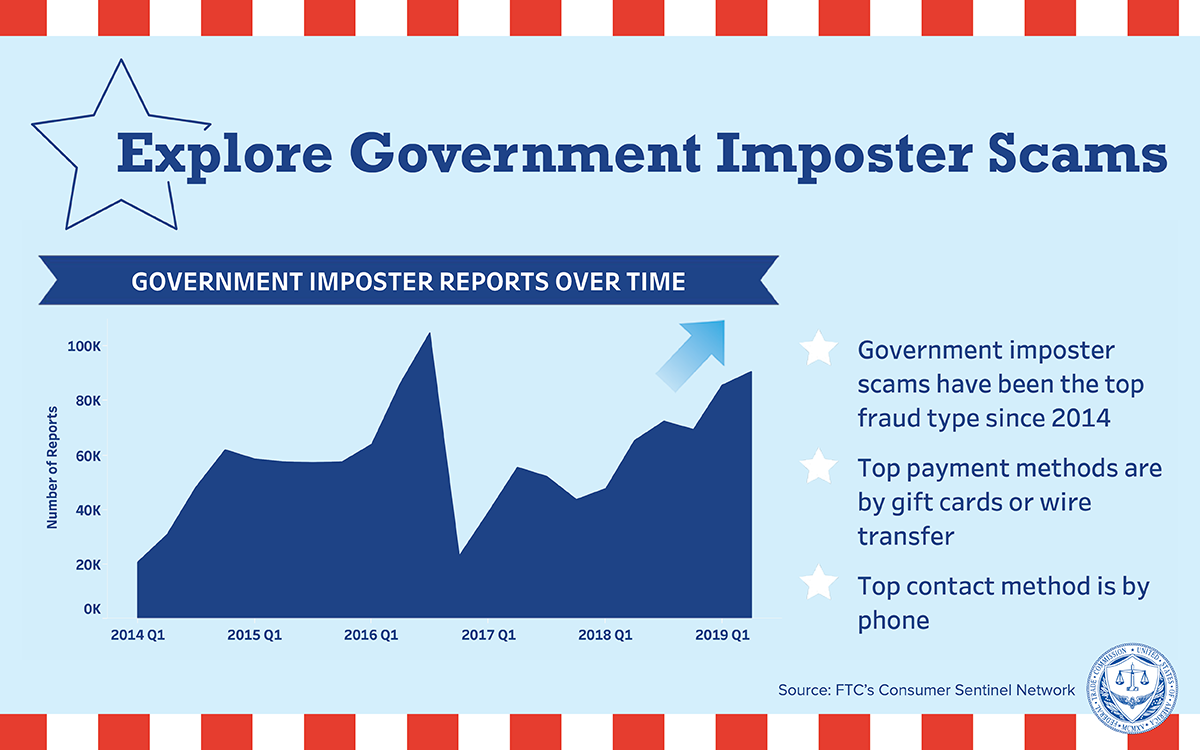You’ve gotten the calls: from Social Security. Or the IRS. Or Medicare. Or any number of other agencies. Except: as soon as the caller threatens you or demands that you pay them with a gift card or by wiring money, you know. It’s a scam. Even if caller ID tells you otherwise – that’s not the government calling.
The FTC’s latest Data Spotlight shows the surge in reports about government imposters. You know about the Social Security Administration (SSA) imposters who claim that your Social Security number has been linked to “criminal activity” and ask you to provide some information or money. (That’s a lie. The real SSA doesn’t work that way.) But those scammers are not alone: people are still telling the FTC that they’re getting calls from – and losing money to – scammers pretending to be the IRS, Medicare, a government grants group, or cops and the FBI.
Want to know more? Now there’s – dare we say – an awesome way for you to find out. And even create your own handout. You see the graphic here, but if you go to the dynamic, interactive version of the graphic, you can create a version that focuses on the time period or scam you’re most interested in.
Exploring the data can tell you, for example, that this year’s median losses to law enforcement imposters are the highest of all imposter scams (a whopping $3,000), and that 20% of the people who reported those scams told us they lost money. Those calls work because they’re scary. But now you can stay on top of the latest as data is updated every quarter. Or go back 5 years and see how things have changed.
And, of course, there are tips on how to spot government imposters scams. So if you want to share the handout you created with a few clicks, you’ll be able to tell people about not just the scope of the problem, but help them know what to do when they get the next call from the – ahem – government.


In reply to I just received a robocall, by Gary
Pagination